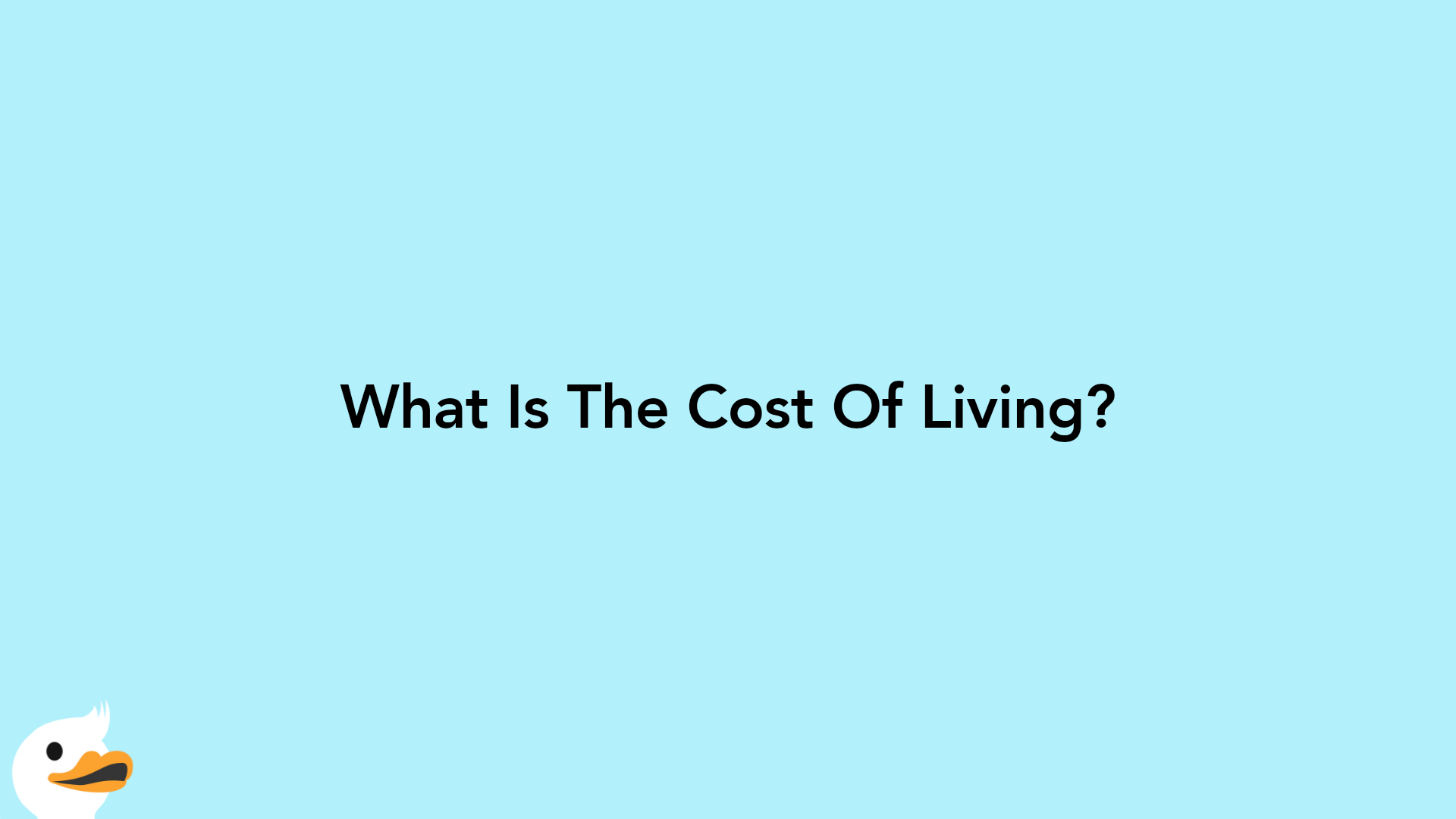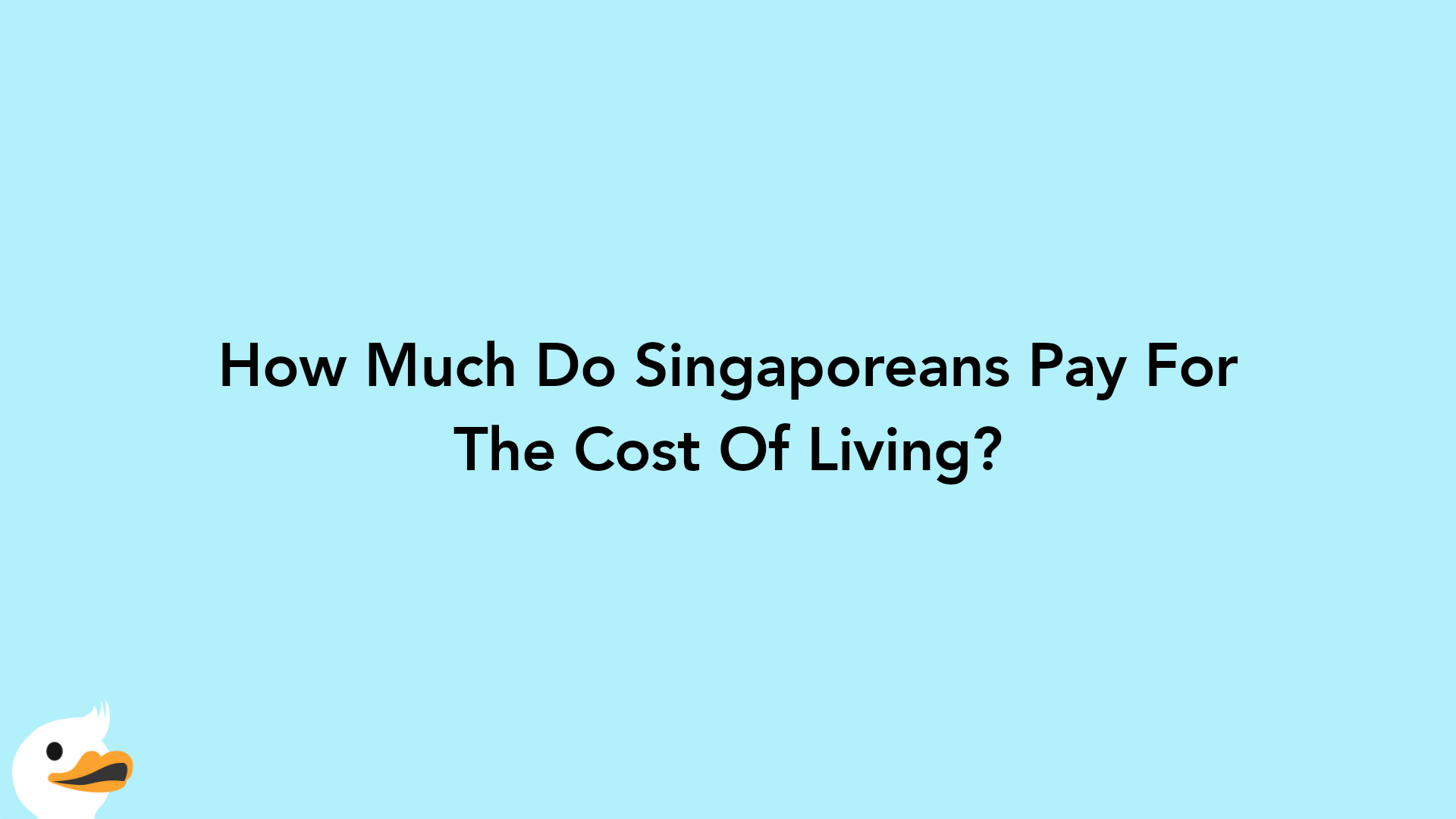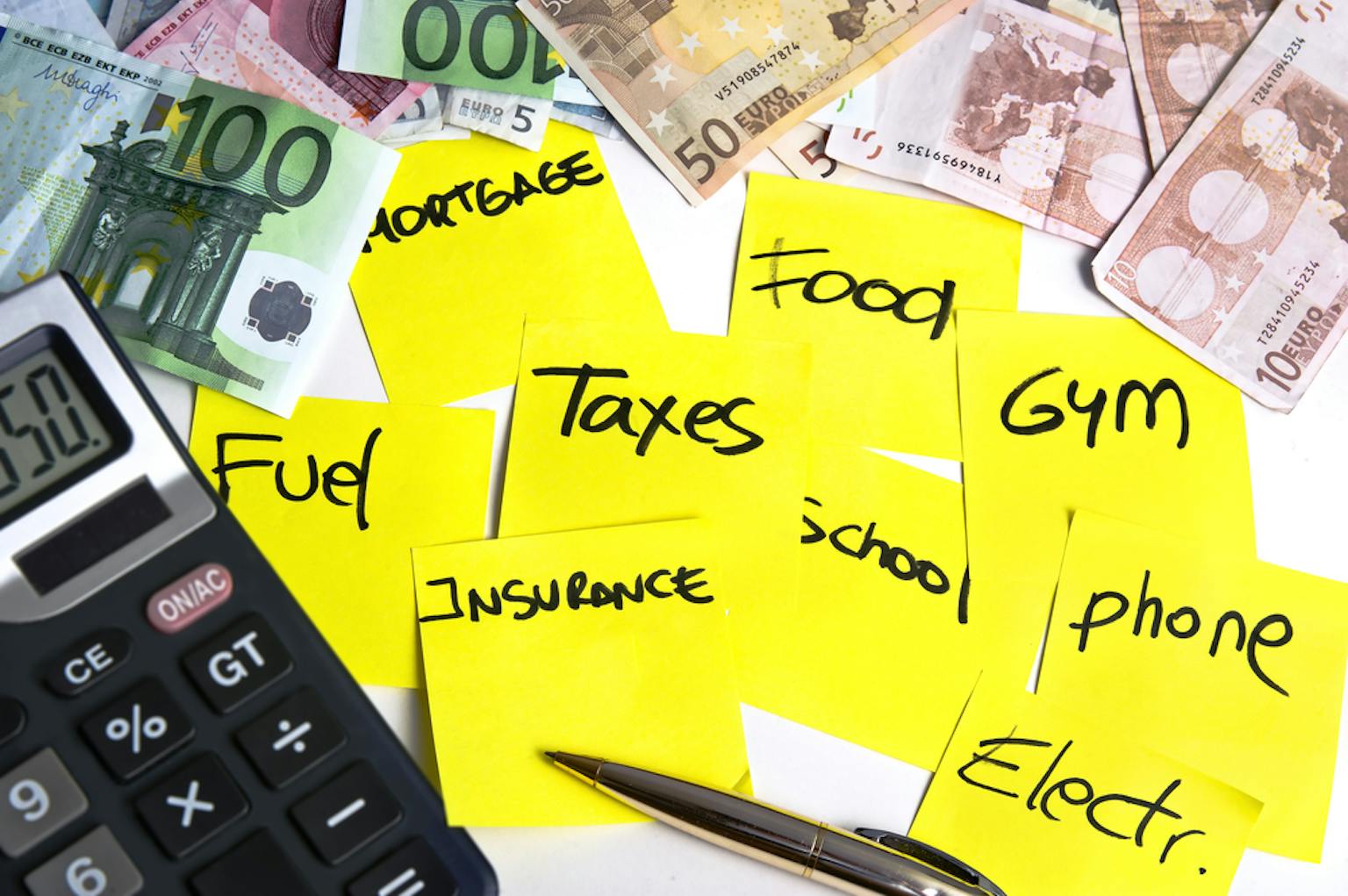It is no secret that Singapore is one of the world's most expensive cities to live in. It ranked number one in the Economist Intelligence Unit's (EIU) Worldwide Cost of Living 2018 survey. As a result, families are forced to adapt to increasing expenses and to make a budget to plan well for the future. Here are our analysis and breakdown of the cost of living and an ideal budget for a family household in Singapore.

Marcos Mesa Sam Wordley/shutterstock.com
What Is The Cost Of Living?

The cost of living is the amount of money everyday items cost. It is a comparison of the different price levels necessary for a reasonable standard of living. Specifically, these expenses may include housing, food, clothing, taxes, and health care. Of course, how high or low your income is and how basic or extravagant your lifestyle is, significantly influence how you feel about the cost of living in your city.
How Much Do Singaporeans Pay For The Cost Of Living?

Housing
More than 80% of local Singaporeans live in HDB flats, or government housing units. Most of these flats are in convenient locations and easily accessible to banks, schools, and markets. The rent for a 3-bedroom HDB apartment close to the Central Business District is approximately S$3,000. A landed property, or real estate which includes land ownership, with three bedrooms typically starts at S$300,000. As a result, a home loan payment for this three-bedroom would likely cost S$1,200 per month.
Food
The cost of food and dining is difficult to pinpoint because of the range of inexpensive to lavish food options available. Food expenses will depend on how extravagant your palate is and how often you cook at home or eat out. If you cook at home, GuideMeSingapore, a financial blog, estimates that your average monthly food costs per person are approximately S$200 for basic meat and vegetables. If you choose to eat out, an average restaurant meal can set you back S$20 to S$40 per person. Dollars and Sense published that a household actually spends S$1,188 on food per month.
Clothing
It's best to put clothing into a category of general shopping. Theoretically, you don't need to buy new clothes every month. However, this is a hobby that I enjoy too. Yes, shopping can be a hobby. On average, a Singaporean household spent about S$200 per month on shopping. This includes clothing, shoes, accessories, and other personal articles.
Transportation
Surprisingly, after housing and food, the next category that Singaporeans spent the most on was transportation. ValueChampion found that the median household spent S$778 per month on transportation. Of course, this number will vary depending on if you own your car or use public transportation. Keep in mind that Singapore has one of the best public transportation systems in the world. Owning a private car is considered a luxury and will significantly increase your cost of living expenses.
Education
For a family with children, a necessary expense will be education. On average, a family spent S$322 per month. This number will increase if you choose to go to an overseas university, study at a local institution, or attend a polytechnic school.
Health and Personal Care
This general category includes medical services and personal grooming expenses. The typical household spends approximately S$407 per month. This allotment will go up if your family has special medical expenses.
Recreation
While this cost is not necessary, everybody needs a little bit of "R and R," or rest and relaxation. The median household spent S$440 per month on recreational activities. We use the "median" because there is a large discrepancy on how much a household spent compared to their income. More wealthy families spent about S$1,022 while lower-income families only spent S$145. As a result, calculating the "average" would skew the data. Instead, a better idea of what typical household spend is the median of S$440.
Insurance
Insurance is difficult to find what is "normal" because people have different views about what types of insurances they need. For example, wealthier families spent on life insurance, housing insurance, transport insurance, and travel insurance. On the other hand, less affluent families spent more on health insurance. In general, households spent about 6% of their monthly budget on insurance expenses.
Utilities and Housing Related Expenses
The average household spent over S$600 in utilities, such as gas, water, and electricity. A large portion of your bill is dependent on your air-conditioning usage in the summer. This number may also increase if you opt for a cable TV connection and your choice of channel subscriptions.
Telecommunications
This category holds a critical space in my budget. Since we are almost always on our smartphones, it is not surprising that most families spent around S$240 per month. This number reflects higher data limit plans.
What Does The Ideal Budget Look Like?

An ideal budget is a beautiful chart, usually a pie chart or donut chart, that clearly cuts out how much you should be spending on each category of life. Unfortunately, an ideal budget is different for each household. It measures what you spend on, changes with how important it is to you, and helps you meet your financial goals, such as saving for retirement.
Take me for example. Food and beverage is a high priority in my budget. This is probably a true statement for most Singaporeans. A financial advisor may suggest that I cook more and stop spending so much in that category. He may want to shrink the percentage of my income that I spend on meals. Unfortunately, that is not going to work for me.
Here is a visual idea of what a Singaporean budget looks like for an average Singaporean household. You can compare how your finances stack up to the rest of your peers.
Please note that this chart does not take into account housing. Those who choose to rent or own their home can significantly change the way this graph looks. Furthermore, this budget does not have an allotment of your income to put away for savings and any outstanding debts you may have, such as personal loans, car loans, or education loans). Experts recommend that you should save 10% to 15% on your monthly income for a rainy day. You should adjust this percentage if you choose to save for retirement as well. Both housing and debt should be added to your personal budget as needed.
Final Thoughts

Now that you see what your fellow Singaporeans are spending every month, you can evaluate your cost of living against the norm. Of course, personal finances vary with income levels and lifestyle choices. Your ideal budget is what is best for your family. The goal of a budget is to identify your expenses and to make changes to stop overspending. The first step is analyzing what you spend on and how much you spend. Then, you can monitor your expenses in the following months to limit your purchases if necessary. Once you have a budget, there are no excuses, and you can now take control of your finances!





















Sean
i spend $0.50 everyday for food water transportation and allowances. i’m suffering very much, donate me money 💰
Jack
according to the scientific fact you open the cupboard the cupboard closes but when you close the cupboard the cupboard also closes but then bicycle butterfly is not in the cupboard so therefor you are not the cupboard i am the cupboard
Tian Fu
Im gae Im gae Im gae Im gae Im gae Im gae Im gae Im gae Im gae Im gae Im gae Im gae Im gae Im gae Im gae LoL gae